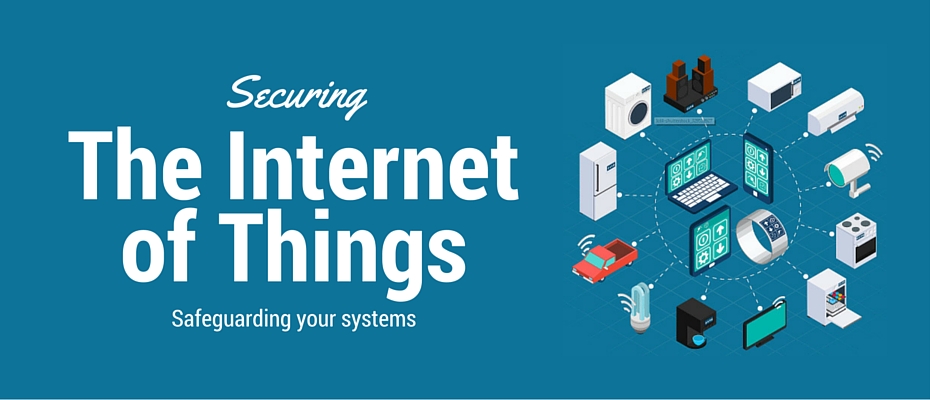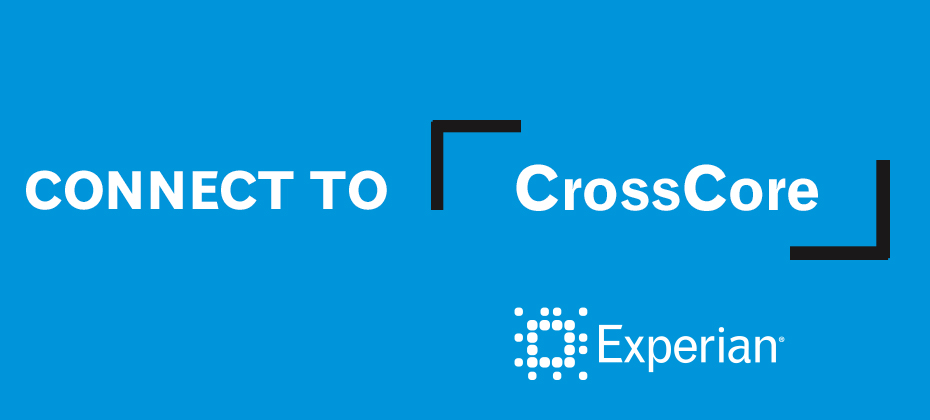Tag: fraud

Unfortunately, identity theft can happen to anyone and has far-reaching consequences for its victims. According to the US Department of Justice (DOJ)’s most recent study, 17.6 million people in the US experience some form of identity theft each year. This includes activities such as fraudulent credit card transactions or personal information being used to open unauthorized accounts. The most obvious consequence that identity theft victims encounter is financial loss, which comes in two forms: direct and indirect. Direct financial loss refers to the amount of money stolen or misused by the identity theft offender. Indirect financial loss includes any outside costs associated with identity theft, like legal fees or overdraft charges. The DOJ’s study found that victims experienced a combined average loss of $1,343. In total, identity theft victims lost a whopping $15.4 billion in 2014. Beyond money lost, identity theft can negatively impact credit scores. While credit card companies detect a majority of credit card fraud cases, the rest can go undetected for extended periods of time. A criminal’s delinquent payments, cash loans, or even foreclosures slowly manifest into weakened credit scores. Victims often only discover the problem when they are denied for a loan or credit card application. Last year, Experian found that these types of fraud take the longest time to resolve. Identity theft doesn’t just impact victims financially; it also often takes a significant emotional toll. A survey from the Identity Theft Research Center found that 69 percent felt fear for their personal financial security, and 65 percent felt rage or anger. And, almost 40 percent reported some sleep disruption. These feelings increased over time when victims were unable to settle the issue on their own, according to the report, which can result in problem as work or school, and add stress to relationships with friends and family. Thankfully, consumers are getting smarter about the best ways to protect their information, like using monitoring services or following security best practices. How are you protecting yourself against identity theft? Learn more about our Identity Protection Services

Did you know that identities can shift (for better or worse) in just 30 days? To succeed in today’s multichannel, mobile environment, businesses must have a broader, more dynamic identity management strategy that includes: Identity proofing: Point-in-time verification (e.g., account opening) Authentication: Ongoing verification (e.g., account login) Identity management: Continual monitoring throughout the Customer Life Cycle Minimize your identity fraud risk, increase customer engagement and provide a satisfying customer experience by shifting to a strategy focused on identity relationship management. >>The three pillars of identity relationship management

Experian has been selected as one of the leading players in the fraud detection and prevention space in Juniper Research’s Online Payment Fraud strategies report.

Fraudsters invited into bank branches The days of sending an invitation in the mail have for the most part gone by the wayside. Aside from special invitations for weddings and milestone anniversaries, electronic and email invitations have become the norm. However, one major party planner has refused to change practices — banks inviting fraudsters into their banking centers. As a fraud consultant I have the privilege of meeting many banking professionals, and I hear the same issues and struggles over and over again. It’s clear that the rapid increase of fraudulent account-opening applications are top of mind to many. What the executives making policy don’t realize is they’re facing fraud because they’re literally inviting the fraudsters into their branches. Think I’m exaggerating? Let me explain. I often encounter bank policymakers who explain their practice of directing a suspicious person into a banking center. Yes, many banks still direct applicants who cannot be properly verified over the phone or online into their banking center to show proof of identity. Directing or inviting criminals into your bank instead of trying to keep them out is an outdated, high-risk practice — what good can possibly come of it? The argument I typically hear from non-fraud banking professionals: “The bad guys know that if they come into the bank we will have them on film.” Other arguments include that the bad guys are not typically bold enough to actually come into the banking center or that their physical security guards monitor high-traffic banking centers. But often that is where bank policies and employee training ends. Based on my years of experience dealing with banks of all sizes, from the top three global card issuers to small regional banks, let me poke a few holes in the theory that it is a good deterrent to invite perpetrators into your banking center. Let’s role-play how my conversation goes: Me: “When an underwriter with limited fraud training making the decision to direct a suspicious applicant into a banking center, what is the policy criteria to do so?” Bank policymaker: (typical response) “What do you mean?” Me: “What high-risk authentication was used by the underwriter to make the decision to extend an invitation to a high-risk applicant to come into the banking center? If the applicant failed your high-risk authentication questions and you were not able to properly identify them, what authentication tools do the branch managers have that the underwriters do not?” Bank: “Nothing, but they can usually tell when someone is nervous or seems suspicious.” Me: “Then what training do they receive to identify suspicious behaviors?” (You guessed it …) Bank: “None.” (I then switch to the importance of customer experience.) Me: “How do you notify the banking center in advance that the suspicious applicant was invited to come in to provide additional verification?” Bank: “We do not have a policy to notify the banking center in advance.” Me: “What is considered acceptable documentation? And are banking center employees trained on how to review utility statements, state ID cards, drivers’ licenses or other accepted media?“ Bank: “We do not have a list of acceptable documentation that can be used for verification; it is up to the discretion of the banking center representative.” Me: “How do you ensure the physical safety of your employees and customers when you knowingly invite fraudsters and criminals into your banking center? How do you turn down or ask the suspicious person to leave because they do not have sufficient documentation to move forward with the original application for credit? If a suspicious person provides your employee with a possible stolen identification card, is that employee expected to keep it and notify police or return it to the applicant? Are employees expected to make a photocopy of the documentation provided?” The response that I usually receive is, “I am not really sure.” I hope by now you are seeing the risk of these types of outdated practices on suspicious credit applications. The fact is that technology has allowed criminals to make fairly convincing identification at a very low cost. If employees in banking centers are not equipped, properly trained, and well-documented procedures do not exist in your fraud program — perhaps it’s time to reconsider the practice or seek the advice of industry experts. I have spent two decades trying to keep bad guys out of banks, but I can’t help but wonder — why do some still send open invitations to criminals to come visit their bank? If you are not yet ready to stop this type of bad behavior, at the very least you must develop comprehensive end-to-end policies to properly handle such events. This fraud prevention tactic to invite perpetrators into banks was adopted long before the age of real-time decisions, robust fraud scores, big data, decision analytics, knowledge-based authentication, one-time passcodes, mobile banking and biometrics. The world we bank in has changed dramatically in the past five years; customers expect more and tolerate less. If a seamless customer experience and reducing account-opening and first-party fraud are part of your strategic plan, then it is time to consider Experian fraud solutions and consulting.

Experian’s annual global fraud report reveals trends that can help organizations mitigate fraud and improve the customer experience: Apply the right-sized fraud solutions to reduce unnecessary customer disruption Ensure you have a universal consumer view Select fraud solutions that are future-proof As fraudsters evolve, losses are climbing and the status quo is no longer effective. Organizations should be as forward-looking in fighting fraud as they are in business operations and marketing. >> Global Business Trends: Protecting Growth Ambitions Against Rising Fraud Threats

In an attempt to stay ahead of fraud, systems have become more complex, more expensive and even more difficult to manage, leading to more friction for customers. How extensive is this impact? 30% of online customers are interrupted to catch one fraudulent attempt One in 10 new applicants may be an imposter using breached data $40 billion of legitimate customer sales are declined annually Businesses must continue their efforts to protect all parties’ interests if they are to thrive in this new world of rapid technological growth. >> Infographic: Global fraud trends

We are excited to announce that Experian Fraud and Identity Solutions is presenting at FinovateFall 2016! Finovate conferences showcase cutting-edge banking and financial technology in a unique demo-only format. Held twice a year, the conferences bring together the leaders from top financial institutions, fintech companies, investors from around the globe, and fintech media to share and promote the most innovative financial technology solutions. "Experian’s Fraud and Identity Solutions is a leader in customer-centric identity and fraud solutions, providing fraud management solutions to some of the world’s largest brands in financial services, insurance, and retail," said Adam Fingersh, general manager and senior vice president of Fraud and Identity Solutions in North America. "We will introduce our Fraud and Identity Solutions and promote our newly released CrossCore platform. CrossCore puts more control in the hands of fraud teams to adapt and deploy strategies that keep up with the pace of fraud while reducing burdens on IT and data science teams." Fingersh and John Sarreal, senior director of Fraud and Identity product management at Experian, are presenting the 7-minute demo focusing on the key CrossCore capabilities, and how CrossCore manages fraud and identity services through its flexible API; open, plug-and-play platform; and powerful workflow and strategy design capabilities. In Forrester’s 2016 “Vendor Landscape: Mobile Fraud Management”, Experian Fraud and Identity Solutions was cited as having the most capabilities and one of the highest estimated revenues in total fraud management in the market, between $200 million and $250 million. Join us for the event on September 8-9 in New York. Experian also has an exclusive 20% off discount code (Experian20FF16) to get even more savings! For more information on the event or to view videos of previous demos, please visit finovate.com.

New industry report highlights the convergence of business growth and fraud prevention strategies Experian has published its first annual global fraud report covering the convergence of growth strategies and fraud prevention. The report, Global Business Trends: Protecting Growth Ambitions Against Rising Fraud Threats, is designed as a guide for senior executives and fraud prevention professionals, offering new insights on how the alignment of strategies for business growth and fraud prevention can help a business grow revenues while managing risks in an increasingly virtual world. The report identifies five trends that businesses should assess and take action on to mitigate fraud and improve the customer experience in today's fast-paced, consumer-centric environment: Applying right-sized fraud solutions to reduce unnecessary customer disruption: It's time to move on from a one-size-fits-all approach that creates more customer friction than necessary. Instead, companies should apply fraud solutions that reflect the value and level of confidence needed for each transaction. This means right-sizing your fraud solutions to align with true fraud rates and commercial strategy. Having a universal view of the consumer is the core of modern fraud mitigation and marketing: Achieving a universal profile of consumer behavior — beyond the traditional 360-degree view — requires access to a combination of identity data, device intelligence, online behavior, biometrics, historical transactions and more, for consumer interactions not only with you, but across other businesses and industries as well. Companies that translate this knowledge and use it to identify consumers can distinguish a fraudster from a real customer more easily, building trust along the way. Expanding your view through a blended ecosystem: In addition to using your own first-party data sources, companies need to participate in a blended ecosystem, working across businesses and even industries. Fraudsters have access to more data than ever before, including data traditionally used to verify identities, and they use that data to create an entire digital profile. Therefore, you can no longer get to the digital interaction data you need by managing the process in a siloed manner. Achieving an expansive view of the universal consumer requires multiple data sources working together. Achieving agility and scale using service-based models: Today, more and more companies are choosing subscription-based systems rather than building in-house or implementing on-premise solutions. Continuous upgrades and the access to new risk logic that come with subscription models provide more agility and faster response to emerging threats, no matter how fast your volume grows or what products, channels or geographies you pursue. Future-proofing fraud solution choices: Companies need access to a wide variety of traditional and emerging technologies and information sources to fill in knowledge gaps and blind spots where fraudsters try to hide. The ability to modify strategies quickly and catch fraud faster while improving the customer experience is a critical aspect of fraud prevention moving forward. Bringing together these key trends, the report provides business leaders with the insight they need to fight fraud using the same consumer-focused approach currently being used to attract new customers and grow revenue. "There is a persistent mindset that fraud loss is just the cost of doing business," said Steve Platt, global EVP, Fraud and Identity, Experian. "But as fraudsters evolve, those losses are climbing, and the status quo is no longer effective or acceptable. We all need to be as forward-looking in fighting fraud as we are in business operations and marketing, and a real understanding of consumers is critical for success. We're talking about the convergence of business growth and fraud prevention, and we're pleased to provide the first report in the marketplace covering this topic." Download the full report here. The report also features an interactive Fraud Prevention Benchmark tool that companies can use to explore how these trends impact their business and how the performance of their approach measures up against industry practices. The report is relevant to functions spanning the enterprise, including C-suite executives such as chief marketing officers (CMOs), chief risk officers (CROs) and chief data officers (CDOs). The report focuses on business processes where fraud infiltrates, including new account opening, account access, money movement transactions, and emerging trends combating fraud, such as advanced fraud analytics. In each area, the report details how multiple business functions can apply responses to create business growth. Steve Platt added: "We hear from our clients that they are most successful when CMOs along with CDOs and CROs all work together to understand the customer and develop fraud management solutions that create a better overall experience." Experian was recently cited in Forrester's 2016 Vendor Landscape: Mobile Fraud Management Solutions1 report and listed as having nine out of a possible 10 capabilities needed to combat mobile fraud. Experian was also identified as one of three leading players in the fraud detection and prevention space in a new study from Juniper Research.2 Experian applied best practices to create a global report on providing fraud management solutions that allow companies to maximize profitability while providing secure, hassle-free customer interactions. Learn more about Experian’s Fraud and Identity business. 1Vendor Landscape: Mobile Fraud Management Solutions, Forrester Research, Inc., June 2016. 2Online Payment Fraud: Key Vertical Strategies & Management 2016–2020, Juniper Research, June 2016.

Many fraud and compliance teams are struggling to keep pace with new business dynamics. Here are several of the many mobile device trends affecting business today: 35% year-over-year growth in mobile commerce from 2014-2015 Value of mobile payment transactions is forecasted to reach more than $27 billion in 2016 45% of smartphone owners use a mobile device to make a purchase every month This rapid growth only reinforces the need for aggressive fraud prevention strategies and the adoption of new technologies to prepare for the latest emerging cybersecurity threats. >> Forrester's 2016 Vendor Landscape: Mobile Fraud Management Solutions Report

Is the speed of fraud threatening your business? Like many other fraud and compliance teams, your teams may be struggling to keep up with new business dynamics. The following trends are changing the way consumers do business with you: 35 percent year-over-year growth in mobile commerce More than $27 billion forecasted value of mobile payment transactions in 2016 45 percent of smartphone owners using a mobile device to make a purchase every month More than 1 billion mobile phone owners will use their devices for banking purposes by the end of 2015 In an attempt to stay ahead of fraud, systems have become more complex, more expensive and even more difficult to manage, leading to more friction for your customers. How extensive is this impact? 30 percent of online customers are interrupted to catch one fraudulent attempt One in 10 new applicants may be an imposter using breached data $40 billion of legitimate customer sales are declined annually because of tight rules, processes, etc. This rapid growth only reinforces the need for aggressive fraud prevention strategies and adoption of new technologies to prepare for the latest emerging cybersecurity threats. Businesses must continue their efforts to protect all parties’ interests. Fraudsters have what they need to be flexible and quick. So why shouldn’t businesses? Introducing CrossCore™, the first smart plug-and-play platform for fraud and identity services. CrossCore uses a single access point to integrate technology from different providers to address different dangers. When all your fraud and identity solutions work together through a single application program interface, you reduce friction and false positives — meaning more growth for your business. View our recent infographic on global fraud trends

Every day, millions of new things get connected online, such as toasters, heart monitors and cars. Many of these things have weak security controls that create vulnerabilities in critical private networks. As more products get connected, the casual mindset about the security risks inherent in the Internet of Things must begin to change. Here are 12 tips to help safeguard your systems from the Internet of Things. >> Securing the Internet of Things

Experian cited in Mobile Fraud Management Solutions report from Forrester as having the most capabilities and one of the highest estimated revenues in total fraud management

Part 3 in our series on Insights from the Vision 2016 fraud and identity track Our Vision 2016 fraud track session titled “Deployment Made Easy — solving new fraud problems by Adapting Legacy Solutions” offered insights into the future of analytics and the mechanisms for delivering them. The session included two case studies, the first of which highlighted a recently completed project in which an Experian client struggling with rising application fraud losses had to find a way to deploy advanced analytics without any IT resources. To assist the customer, data passing through an existing customer interface was reformatted and redirected to our Precise ID® platform. Upon arrival in Precise ID, a custom-built fraud scoring model was invoked. The results were then translated back into the format used by the legacy interface so that they could be ingested by the customer’s systems. This case study illustrates the key value proposition of Experian’s new CrossCoreTM fraud and identity platform. CrossCore features a similar “translation layer” for inquiries coming into Experian’s fraud and identity tools that will allow customers to define fraud-screening workflows that call a variety of services. The IT burden for connecting the inquiry to various Experian and non-Experian services will fall on Experian — sparing the customer from the challenge of financing and prioritizing IT resources. Similarly, the output from CrossCore will provide a ready-to-consume response that integrates directly with our customers’ host systems. The audience showed keen interest in the “here and now” illustration of what CrossCore will enable. Our second case study was provided by Eric Heikkila at Amazon Web Services™ and focused on the future of analytics. For an audience accustomed to the constraints of developing advanced analytics in a rigid data-structure, Amazon’s description of a “data lake” was a fascinating picture of what’s possible. The data lake offers the simultaneous ability to accommodate existing structured customer data along with new unstructured data in an infinitely scalable data set. Equally important is the data lake’s ability to accommodate an unlimited array of data mining and analytical tools. Amazon’s message was clear and simple — the fraud industry’s trepidation around the use of big data is misplaced. The fear of making the wrong choice of data storage and analytical tools is unnecessary. To illustrate this point, Eric shared an Amazon Web Services case study that used FINRA (Financial Industry Regulatory Authority). FINRA is responsible for overseeing U.S. securities markets to ensure that rules are followed and integrity is maintained. Amid a bewildering set of ever-changing regulations and peak volumes of 35 trillion per day — yes, trillion — Amazon’s data lake supports both the scale and analytical demands of a complex industry. As the delivery and access to fraud products is made easy by CrossCore, the data and analytics will expand through the use of services like Amazon’s data lake. As the participants will agree, the future of fraud technology is closer than you think!

Part 2 in our series on Insights from the Vision 2016 fraud and identity track With the growing number of data breach incidents taking place the stolen data from those attacks is being used to carry out social engineering attacks used to commit call center fraud. A recent study stated that global call center fraud has increased more than 45% in the last three years as fraudsters use social engineering to steal data and turn profits. The same report found that criminals might make up to 5 calls to a center, pretending to be the victim, before completing a fraudulent transaction. The importance of strong call center authentication procedures is greater than ever. At the 35th annual Vision Conference, Bobbie Paul from Experian’s Global Consulting Practice, Stefan Schubert from JPMorgan Chase and I led a session about call center authentication. After introductions and a discussion about existing call center identity authentication techniques, Stefan took the podium and provided an excellent overview of how his company approaches call center authentication. He made an interesting point — despite introducing friction into his process, he was not of the opinion that knowledge-based authentication (KBA) was going away any time soon because of how deeply it is embedded into their processes and its applicability to most consumers. He also called out the importance of reviewing KBA configurations regularly to adjust which questions are being asked and the positive implication to deterring fraudsters. Bobbie followed Stefan to discuss emerging call center authentication technologies, including a new take on an old tool — document imaging. She also discussed the notion of phone printing, which does not specifically evaluate the voice on the phone, but looks at the characteristics of the call itself, including the type of phone being used and the environment from which the call is being made. One of the highlights of the session was the interaction with the audience — including a demonstration of how, with a little distraction, it was easy to walk away with an audience member’s phone, how a fraudster could access and compromise a phone and how a gummy bear could be used to defeat fingerprint biometrics. What I, and many others, took away from this is that even with newer fraud detection tools available, incorporating tried-and-true methods like KBA is still an important step into a holistic fraud detection strategy.

Industry’s first smart plug-and-play fraud platform allows companies to connect their own solutions, Experian products and third-party vendors in one place to better protect their customers from fraud threats Experian unveiled the fraud and identity industry’s first open platform designed to catch fraud faster, improve compliance and enhance the customer experience. Experian’s CrossCore™ gives companies an easier way to connect any new or existing tools and systems in one place, whether they are Experian, internal or third-party partner solutions. This “plug-and-play” capability allows companies to rapidly adapt to changing conditions and risks. “Our clients have expressed frustration over the lack of a truly holistic industry solution that delivers the level of confidence and control they need without requiring a massive multiyear project to replace everything they have,” said Steve Platt, global executive vice president, Fraud and Identity, Experian. “New fraud threats, updates to regulatory requirements and customer expectations for a hassle-free experience are making it challenging for fraud and compliance teams to keep up. CrossCore will give them the flexibility they need to balance customer protection with customer experience.” The CrossCore open platform enables organizations to manage services through a common access point that supports a layered approach to managing risks across providers. CrossCore includes powerful workflow and strategy design capabilities that allow fraud and compliance teams to create and adapt strategies based on evolving threats and business needs. This helps them to respond more quickly and reduces the burden on IT. Fraud and compliance teams must constantly respond to new fraud threats and changing regulatory requirements by implementing new tools on top of existing solutions. “A layered approach is imperative, because fraudsters can break through each layer individually, but they will face greater barriers with each additional layer imposed,” said Avivah Litan, vice president and distinguished analyst, Security and Privacy, of Gartner.[1] Over time, as layers have been added and fortified, systems have become increasingly complex, expensive to integrate and difficult to manage, often increasing customer friction. A key feature of the CrossCore fraud platform is the ease of integration with third-party partner solutions. At launch, CrossCore will support fraud and identity services provided by third-party partners, including Acxiom® (Identity Solutions), TeleSign and many others already integrated with Experian solutions, with more being added to the platform. Previously, integrating third-party solutions required tremendous time and effort, which often challenged in-house teams to execute in a timely, efficient manner. Through CrossCore, the responsibility of integrating additional tools and systems moves away from those teams to the platform itself, enabling clients to select best-in-class solutions from multiple providers without creating a strain on resources. Al Pascual, senior vice president, research director and head of fraud & security for Javelin, said, “There are so many great niche solutions to work with, and new ones come out almost every day. To really have a world-class approach, the client has to put all those little things together, because there never will be one vendor who does it all. The market challenge is about how to make it faster and easier to bring things together to enable a more dynamic and fluid approach to managing risk.” CrossCore features Common access through a flexible API connects disparate systems to improve risk controls while reducing integration cost and complexity An open approach enables clients to connect and optimize a portfolio of best-in-class solutions across Experian, third-party services and existing systems Powerful strategy design and workflow decisioning functions enable fraud and compliance teams to apply services in any combination to get the level of confidence required A modern Software as a Service (SaaS) architecture provides scalability and the ability to make strategy changes dynamically with no down time Experian, which offers fraud and identity services in more than 44 countries, developed CrossCore to address the widespread market need consistently expressed by its clients for a faster, easier way to get more out of their existing systems and add new tools to improve their customers’ experience while minimizing risk. Companies can begin accessing CrossCore immediately, with the ability to turn on Experian services through a single integration, connect their own fraud and identity capabilities with a common API and turn on new services as they are added. The initial release includes key Experian products: FraudNet for Account Opening; Hunter®, for application fraud detection; Prove-ID, for international identity verification; and Precise ID®, for U.S. identity verification, including knowledge-based authentication. (KBA). Third-party fraud and identity service providers can engage with CrossCore to connect their services. “Now, companies can implement a new approach to managing fraud and identity services — one that will give them greater control over their risk exposure and enable them to provide a safer and more enjoyable experience for their customers,” added Platt. Learn more about CrossCore at https://www.experian.com/crosscore [1]Gartner, Identity Proofing Revisited as Data Confidentiality Dies, Avivah Litan, Dec. 12, 2013; last reviewed on April 28, 2015